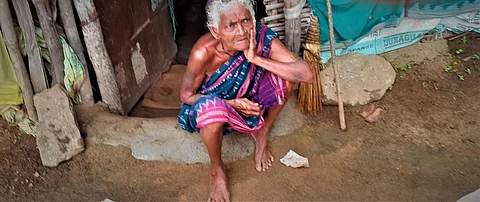

At least 2,043 migrant labourers, who have returned to Odisha’s Balangir district recently due to the novel coronavirus disease (COVID-19) pandemic, are in home quarantine, district officials said.
This year, 23,000 migrant labourers from different villages had registered with the district labour authorities and gone to work mostly in brick kilns in Telangana and Tamil Nadu. Following the coronavirus scare, many have returned home.
So far, no one has been found to be infected with the coronavirus (SARS-COV-2), officials said. However, the administration has advised all migrants to be in home quarantine as a preventive measure.
The Balangir district administration has arranged for temporary medical and quarantine centres at schools and community centres, according to the Odisha government’s directives for the total lockdown in the state’s 30 districts.
The centres are supposed to be looked after by panchayat extension officers, sarpanches, samiti members and the 3As — Anganwadi workers, ASHAs and auxilliary nurse midwives (ANMs).
Balangir is one of Odisha’s major migration-prone districts. The real number of residents migrating from the district is four times higher than those registered with the labour department, according to social activists and non-governmental studies.
Migrants from Balangir usually leave for their workplace outside the state by December-January and return by June-July every year. This time, however, many are returning early due to COVID-19.
Besides, in recent times, young people from the villages have been migrating to work in malls in Mumbai, Pune, Hyderabad and Bengaluru. Around 300 of them have also returned home, according to sources.
Fear and stigma of coronavirus has been seen in Balangir too. Villagers have become wary of the returning migrants. There have been stray reports of returnees being barred from entering villages or allowed after screening in the presence of block officials and doctors.
“The Anganwadi workers, ASHAs and ANMs have been tracking the returnees and registering them and we are monitoring the situation. The administration officials are visiting the villages to make people aware about the danger of COVID-19 and need for isolation,” Balangir sub-collector Sanjay Mishra said.
Officials admit that many migrants, most of who came by crowded trains, might have gone to their villages unnoticed without any screening. That has increased the burden of frontline workers to track them, they said.
A Balangir-based doctor said a large number of migrants had come back to their villages before the announcement of the lockdown in Odisha. The district was not among the districts or urban areas where the state government imposed a lockdown in the first phase, on March 21, 2020.
“Temporary medical and quarantine centres will not be able to function properly if not backed by adequate man power. Government officials must take the information of frontline workers like Anganwadi or ASHAs seriously to effectively combat COVID-19,” he said, requesting anonymity.
Umi Daniel, director of migration and education, Aide et Action South Asia, an international non-profit, said his group had persuaded at least 5,000 labourers from Balangir working in brick kilns in Telengana and Tamil Nadu to stay back in the areas of their work till the epidemic was over.
A total of 164 samples have been tested for COVID-19 so far, out of which just two samples have been found to be positive while 162 have been found to be negative, according to the Odisha health department website.
At least 4,249 people with a travel history have registered themselves with the administration.
State-level developments
India’s biggest exclusive COVID-19 hospital having 1,000 beds — 500 each at SUM Medical College Hospital and KIIMS Medical College Hospital in Bhubaneswar, was announced by the Odisha government on March 26, 2020.
The hospital will be operational within 15 days. The state government signed a tripartite agreement with both the medical colleges in this regard.
The COVID hospital will be funded from the corporate social responsibility fund of the state-owned Odisha Mining Corporation and the national public sector Mahanadi Coalfields Ltd, a statement by the Odisha government said.
At least 84,000 migrant labourers working outside the state have returned to Odisha, the state government’s chief spokesperson for COVID-19, Subroto Bagchi, said. “Some of the returnees may be infected with the Coronavirus and quarantine arrangements have been made at gram panchayat level with 7,276 beds,” he said.
The government has given three months’ salary in advance to doctors and paramedics working in the fight against the coronavirus.
The government also set up a 24x7 control room at the home department on March 26, with phone numbers 0674-2392115 and 94389-15986 to provide help to people related to COVID-19. Inspector General of Police Amitabh Thakur will supervise overall functioning of the control room.
In the last 24 hours, the government has filed cases against 404 persons for violating the guidelines of COVID-19. A total of 380 cases are related to violation of lockdown norms, 10 for flouting home quarantine and 14 for other causes.
Balaram Pujari, block chairman of Dharamgarh in Kalahandi district, was arrested on March 26 by the police for violating lockdown. Pujari held a housewarming feast attended by a large number of people, officials said.